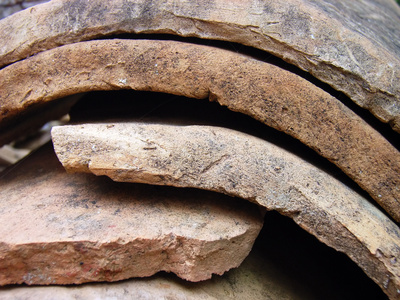
Old tiles can be an unwieldy mess around your home or project site once they're removed to make room for new tile. Clean, relatively undamaged tiles not constructed of asbestos may have a second life as sculpture or as other decorative pieces. However, if your tiles are tired and become damaged during removal and consist of nothing more than garbage, there are ways to dispose of them properly.
Contact your local municipal waste management or recycling facility and gauge their policy regarding disposal of old tiles, which fall under the category of construction debris. Nearly all public waste and recycling agencies accept construction debris, although many charge a fee for the service. There is usually a limit on the gross tonnage a customer can bring to a waste facility at one time, and most charge by the ton.
Old ceramic tiles that survive removal and are particularly pleasing to the eye can live a second life as sculpture or yard art. Several gardens in the American west are detailed with old tile given its abundance in local construction. Several found-object artists work with old tile as their medium to construct mosaics, sculptures, and yard and garden art. Placing a classified ad in the "free" section of your local paper or online may garner interest from an individual or group looking for free materials. Reusing tile in a creative project is also good for the environment.
Almost all floor tiles manufactured between 1960 and 1985 contained asbestos. Asbestos is a dangerous fiber that causes serious illness after long term exposure. If your home was constructed or renovated during this period, contact a contracting professional to dispose of the tile for you, or take steps to protect yourself before removing the material. Asbestos tile must be soaked in water prior to removal. Unlike conventional ceramic tile, asbestos tile should not be reused after removal due to its toxicity.